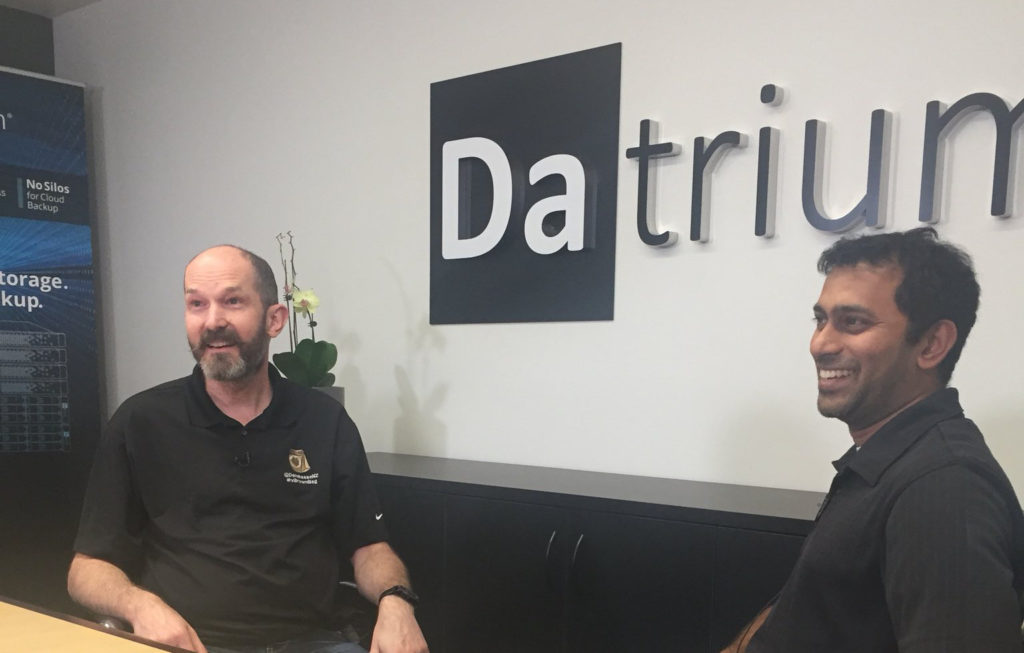The Datrium Build Day was different from other Build Days in that we were live almost the whole time. During the Build Day live stream, we use pre-recorded videos so that you don’t need to watch the progress bar’s slow progress. The pre-recorded videos are usually interviews or demos of things that we don’t do during the live stream. The only time we needed the pre-recorded for Datrium was when we had to wait half an hour for VMs to migrate. We did also play the usual unboxing video, that was more to give the crew a break than because we were waiting for anything. So, does this mean that it takes three hours to deploy the Datrium solution to a four-node vSphere cluster? No, we could have done the deploy quite a bit faster. In a real deployment, the slowest part will be getting two SSD devices available in each ESXi server. The initial configuration of the storage node is a few minutes and the deployment to each ESXi server a few more. You can see the whole live stream in this video on YouTube. Over the next week we will get the remaining videos added to the DVX Build Day Live playlist.
 Lakshmi and I discussing latent sector errors and RAID rebuilds
Lakshmi and I discussing latent sector errors and RAID rebuilds
I really like the Datrium architecture, using ESXi servers as a scale-out storage processor while the data-at-rest resides on a separate disk shelf or shelves. The ESXi servers provide the performance tier as well as all storage service, they scale out as you add more hosts and are very cost effective. ESXi servers use commodity priced CPUs, RAM, and SSDs. No storage array vendor is going to match the hardware prices of server vendors. The IO architecture uses a very distributed model to scale performance. A single Datrium “pod” can scale out to ten storage shelves and 128 compute nodes. That is at least two vSphere clusters sharing the storage pool, quite possibly four or six clusters. A typical HCI deployment has maximum cluster sizes of between eight and sixteen nodes, each cluster is an island of storage capacity and performance. The Datrium pod can also have ESXi servers of different hardware configurations, to support different workloads. Not all HCI products support clusters of dissimilar servers. There is a lot more to Datrium, I learned a lot from Devin and Mike when we were running through the dry run.
Keith Townsend, The CTO Advisor, was with us at the Build Day, he had some thoughts in his Daily Dosage video before the Build Day. Keith also made some more executive oriented videos with Datrium executives:
- Brian Biles and Tushar Agrawal talk about Open Convergence
- Hugo Patterson and Devin Hamilton talked about the Datrium architecture
- Hugo and Devin also talked about data protection
Here are a few more Datrium resources:
My blog post after my first briefing with Datrium.
Chris Mellor’s latest Datrium article in The Register.
Datrium’s appearance at Tech Field Day.
Jeffrey and I had a great Build Day with Datrium, thanks to Craig Nunes for helping us organize the whole thing and committing Datrium to a live build. Also thanks to Tracey showing more of the behind the scenes fun that is part of making a Build Day. There will be one more Build Day Live this year, and we have big plans for more in 2018. Hopefully, we can even do a Build Day Live that you can attend in person.
